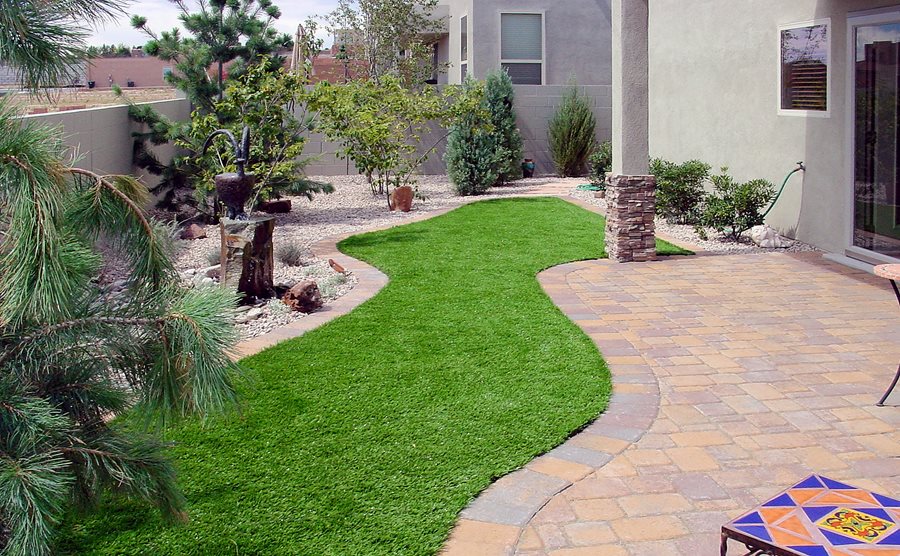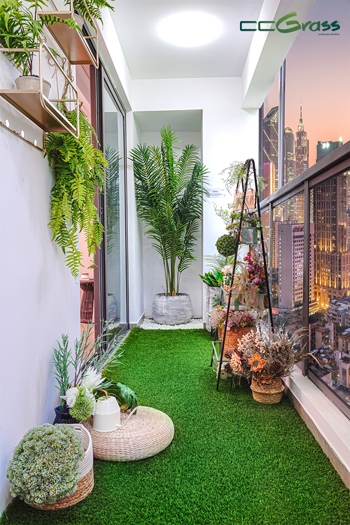Recognizing How Fabricated Turf Works for Your Home and Yard
Synthetic grass has arised as a useful remedy for homeowners seeking to boost their outdoor rooms without the problems of conventional lawn maintenance. Comprehending its make-up, installation process, and the various kinds available can disclose substantial benefits for both appearances and capability. Nonetheless, the implications of selecting synthetic lawn expand beyond mere look; they discuss environmental considerations and long-term sustainability. As we discover these facets, one have to think about just how this innovative technique can basically alter the landscape of home horticulture. What elements should you weigh before making the shift?
Advantages of Synthetic Grass
Identifying the growing popularity of synthetic grass, it is vital to explore its numerous advantages. Among one of the most substantial advantages is the decrease in maintenance requirements. Unlike natural lawn, artificial lawn does not require fertilizing, watering, or mowing, which equates to time and cost financial savings for home owners. This low-maintenance option is particularly enticing in regions with restricted water resources, as it saves water and decreases overall ecological influence (Mesa artificial grass).
Additionally, fabricated turf provides a constantly eco-friendly and lavish appearance throughout the year, despite climate condition. This visual appeal boosts the visual quality of any type of landscape, making it an appealing option for properties. Man-made lawn is long lasting and made to hold up against hefty foot web traffic, making it an ideal solution for family members with animals and youngsters.
Security is one more critical consideration; modern synthetic grass is typically made from safe products and incorporates shock-absorbing innovations, reducing the danger of injuries during play. Synthetic grass is immune to bugs and weeds, getting rid of the need for chemical treatments, therefore promoting a much healthier exterior environment. Overall, the advantages of synthetic grass make it an engaging alternative for enhancing home and garden spaces.
Installation Refine Summary
When thinking about the installation of fabricated grass, a systematic method is important to ensure ideal outcomes. The installment process typically begins with detailed site preparation, which includes removing the location of any kind of existing grass, debris, and rocks. This step is critical for establishing a stable and degree foundation.
Following, it is very important to examine the drain capabilities of the location. Appropriate water drainage is crucial to stop water pooling on the surface area, which could bring about early wear or concerns with mold. If needed., this may need excavation and the installment of a drainage system.
As soon as the site is prepared, a base layer is installed, usually containing crushed stone or decayed granite, compressed to develop a solid surface area. After accomplishing a smooth base, a geotextile textile is put down to inhibit weed growth.
The final stage includes laying the synthetic grass itself. The grass rolls are positioned, cut to fit, and safeguarded at the joints utilizing sticky or customized turf tape. Ultimately, infill materials might be applied to enhance security and enhance the general appearance. Appropriately following these steps will result in a sturdy and cosmetically pleasing synthetic grass installation.
Kinds Of Synthetic Grass

One of the primary groups is property turf, which is typically used in yards, backyards, and play areas. This kind usually features a soft appearance, making it secure for children and pet dogs. Commercial turf, on the other hand, is engineered for high-traffic locations, such as sporting activities fields and community parks. It provides durability and resilience, guaranteeing it endures rigorous use while preserving its look.
Another classification includes landscape grass, which simulates natural turf carefully to boost the aesthetic charm of yards and outdoor rooms. Furthermore, putting eco-friendly turf is particularly created for golf lovers, including a shorter heap height and a smooth surface for an optimal placing experience.
Last but not least, pet-friendly turf integrates antimicrobial residential or commercial properties and sturdy products to make certain a hygienic and safe setting for pet dogs. Selecting the right kind of man-made turf is essential for accomplishing the desired appearance and functionality in your house and garden.
Maintenance Requirements
Proper maintenance is important for prolonging the lifespan and appearance of synthetic grass. Normal upkeep not only boosts aesthetic appeal yet likewise guarantees optimal efficiency. The key upkeep tasks include cleaning, rinsing, and inspecting the turf.

Washing the turf with water assists eliminate dirt, particles, and pet waste. Using a hose pipe with a spray nozzle makes this job effective and effective. In locations susceptible to hefty rains, guarantee correct drain to prevent merging.
Additionally, regular evaluations for problems, such as tears or loose joints, are essential. Timely repair work can avoid much more significant issues and maintain the integrity of the turf. By adhering to these maintenance needs, property owners can enjoy the beauty and functionality of their synthetic grass for years to come, ensuring a vivid and welcoming outside area.
Environmental Considerations
Synthetic grass offers an intricate range of ecological considerations that warrant careful assessment. Mesa artificial turf. While it minimizes the requirement for water, plant foods, and pesticides, which are normally associated with all-natural yard upkeep, there are significant problems regarding its disposal, production, and use
The production of synthetic turf includes petroleum-based materials, questioning about fossil gas intake and greenhouse gas emissions. Moreover, the check my source installation procedure typically requires a layer of infill, frequently composed of products like crumb rubber, which can launch damaging pop over to this web-site chemicals right into the atmosphere.

Disposal of synthetic turf offers an additional obstacle, as it is not naturally degradable and can contribute to landfill waste. Some reusing choices exist, but they are not extensively available or accessible.
Verdict
In summary, fabricated turf provides countless advantages for property and garden applications, consisting of aesthetic charm, low upkeep, and security for family pets and children. Different kinds of man-made lawn cater to different requirements and choices, while ecological considerations highlight its prospective sustainability benefits.
Generally, the advantages of synthetic grass make it an engaging option for boosting home and yard spaces.
When taking into consideration the setup of fabricated turf, a systematic method is important to make sure optimum outcomes. The lawn rolls are put, cut to fit, and protected at the seams utilizing glue or specialized turf tape. Appropriately complying with these steps will result in a long lasting and visually pleasing synthetic turf installation.
In recap, man-made lawn offers countless advantages for property and garden applications, find including aesthetic allure, low upkeep, and safety and security for animals and children.
Comments on “Get a Natural-Looking Lawn with Easy Maintenance Using Mesa artificial grass”